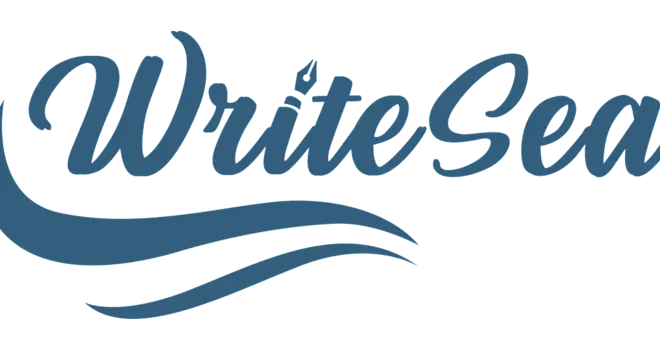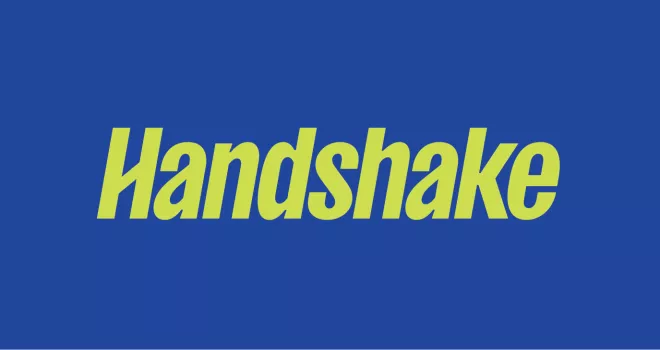Prepare, Apply, & Get Hired
Access job search resources, resume assistance, interview prep, and apply for jobs with Handshake or OKJobMatch. Get expert guidance for success.
Get resources, suggestions, and tips on the many ways to find job openings, as well as develop a marketing strategy to aid you in your search. As a TCC student, you can access free resume assistance tools, interview preparation, and job search.

Your A.I. place for resume, cover letter, and interview prep
From crafting the ideal resume to preparing for interviews, our AI career mobility suite walks you step by step to landing an internship or full time opportunity. Try it now, it's FREE!

Apply for Jobs
Join Handshake to search for open positions, upload your resume, apply for jobs, and connect with legitimate employers nationwide!
For another free option, OKJobMatch shows you job opportunities in all of Oklahoma's 77 counties and neighboring states.
If you have questions about the job application process, need to create a resume/cover letter, or need help researching salary information, schedule an appointment with career services.
Resume Assistance
Whether you are new to the workforce, in career transition, needing to update your resume, or would like to customize your resume for a particular job, our Career Advisors can help. We'll provide resume-writing tips and one-on-one consultation to help critique your resume.
Everything in your resume should be directed toward one goal: Getting a specific job at a particular company. No two resumes should be alike. Each resume should be uniquely targeted to an audience of one.
Identify a resume style you are comfortable with and best reflects your skill set:
- Chronological: This style of resume lists your work experience in chronological order starting with your most recent job. It is ideal if you have a stable work history, your most recent position reflects the strongest aspect of your work experience, and the position you are pursuing is in a field in which you have a strong background.
- Functional: This resume is created without employment dates or company names and emphasizes your skills and responsibilities without disclosing when or where you developed the skills. It is often used if you have been unemployed for long periods of time, changed jobs frequently, or are changing careers.
- Combination: This resume neatly combines the flexibility of the functional resume with the chronological job history that employers expect. This style of resume has two primary sections: an experience section organized by skill sets and a job history section organized chronologically. This resume is very popular with many recruiters as it clearly outlines a candidate’s skills and eliminates restating skills that may be reflected under multiple job titles.
If you want a prospective employer to take notice of your resume, you will need to use words that jump off the paper.
The cover letter allows you to address any concerns an employer may have about gaps in your work history. In it, explain how you've kept your skills up-to-date since your last full-time position, whether through temporary assignments, volunteer work, or professional development courses.
(Links to download resume and cover letter packets)
Interview Tips
To land the job you must convince the employer you are the right person. We can assist you in developing your interviewing skills by providing interviewing tips, typical interview questions for both applicant and employer, and mock interviews.
- Start preparing for interviews long before you have one scheduled. Schedule an appointment with a Career Services staff member for a Mock Interview.
- Know yourself and be able to articulate your skills, abilities, strengths, weaknesses, values, current career, and educational goals
- Know the employer and be able to articulate research about their products, services, operations, and competitors. Online home pages and newsletters are good references.
- Review Interview Questions & Answers and prepare and practice your answers.
- Prepare and lay out your clothing and attire the night before the interview. Make sure your clothes are wrinkle-free with a nice crisp look, your shoes are polished, and you are well groomed.
- Get directions to your interviewing location prior to the day of the interview - allow yourself plenty of time for traffic, parking, and a bathroom break. Plan to arrive at your destination 10 minutes ahead of time
- Prepare additional copies of your resume, references, and transcripts in the event there are several interviewers. Also, it’s helpful to know ahead of time if it is a group or individual interview, so be sure to ask when you schedule your interview.
Do not take a cell phone and/or pager to the interview. Make whatever necessary arrangements so you are not disturbed during the interview.
Presentation
- You only get one chance to make a first impression – make it professional.
- The first person you come in contact with, whether it is the receptionist, or the administrative assistant, treat them with as much respect as the interviewer.
- Display confidence with a firm handshake, eye contact, and listen attentively.
- Have a positive attitude and show enthusiasm
Verbal Communication
- Allow the interviewer to lead and guide the interview.
- Listen carefully to the questions and answer each question thoroughly.
- Ask questions - learn as much as you can about the position beforehand.
- As you engage in your conversation with the interviewer, remember this is a two-way street; you are interviewing the interviewer, as well as being interviewed. You want make sure this is a place you want to work (this is information that is not found online).
Non-verbal Communication
- Eye Contact– If you happen to look away while listening, it displays to the interviewer a lack of interest and a short attention span. Maintaining eye contact while speaking shows confidence in what you are saying.
- Facial Expressions – Facial expressions are very important non-verbal cues. Something such as a smile can tell the interviewer you are a happy person and interested in opportunities offered by the company.
- Posture – When you are standing, stand up straight. When you are seated, sit at the front edge of the chair, leaning forward slightly.
- Gestures – Gestures should be very limited during an interview. When you do use them, make sure they are natural and meaningful.
- Get a business card from the interviewer(s)
- Find out about the next step of the interview process
- Offer a firm handshake
- Thank the interviewer for their time and consideration. Let them know you look forward to hearing from them.
Though you have completed the interview, the process is not finished.
You want to leave a lasting impression on the interviewer:
- Send a thank you note to the interviewer and any others who assisted you in this process (administrative assistance, receptionist, etc.)
- The note should be brief; however, it should be a reminder of why you would be the best possible candidate for the job.
- Evaluate the interview. What went well for you? What questions were asked that you wished you would have had more practice or a better answer?
- In the event of a second interview or an interview with another company, you will be better prepared.
